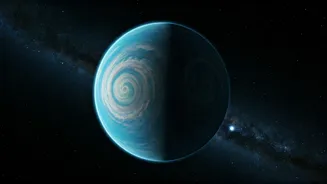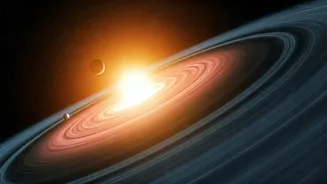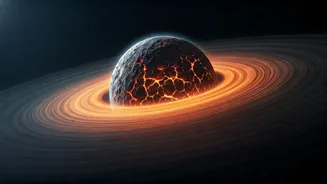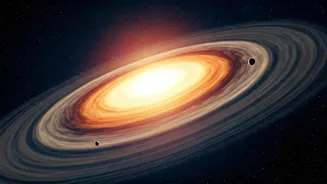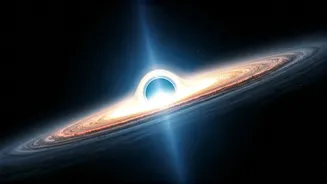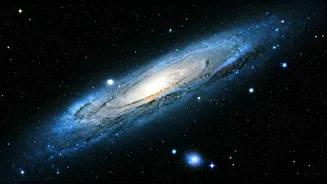Unveiling Mini-Neptunes
The James Webb Space Telescope (JWST) has been deployed to study 'mini-Neptunes,' a category of exoplanets that are typically smaller than Neptune but
larger than Earth. These planets have gained attention as they are common throughout the galaxy; however, their exact composition and atmospheric makeup have been a subject of speculation. JWST's capacity to examine the atmospheres of these distant planets is a significant advancement. Before JWST, the observations of these planets' atmospheres were restricted, yielding indistinct information. The telescope’s superior instruments, including its infrared capabilities, are giving astronomers the opportunity to pierce through the atmospheric haze and capture detailed spectra. These spectra include signatures of molecules and other elements in the atmospheres, providing valuable clues about their composition, temperature, and overall structure. The primary objective is to gain a deeper understanding of the properties of these planets. This, in turn, may help resolve questions about how planets form and evolve in the universe.
Challenging Old Theories
JWST's data has begun to challenge previously held beliefs about mini-Neptunes. Historically, astronomers had several theories about the atmospheric conditions of such planets; however, the new observations are painting a different picture. Some of these theories are being reevaluated based on the data that is coming in. One of the main points of discussion is the composition of the atmospheres. The telescope's findings suggest that the atmospheric makeup of mini-Neptunes might be more varied and complex than previously assumed. This information is challenging models about how planets retain their atmospheres. Additionally, the JWST is helping astronomers determine whether these planets possess the expected layers, like the presence of clouds or hazes. The detection of unexpected elements or compounds also helps to modify our models. These observations have broader implications, helping researchers create more comprehensive models of planet formation and evolution. The information gleaned from these studies is helping to enhance our understanding of planetary systems beyond our own.
Advanced Observations
The success of JWST lies in its state-of-the-art instruments. The telescope includes advanced spectrographs that are capable of splitting the light that is collected into its component wavelengths. This permits scientists to investigate the molecules that are present in the atmospheres of exoplanets, like the mini-Neptunes. This has been a breakthrough. The telescope's capacity to operate in the infrared is particularly important because it allows it to penetrate the atmospheric haze that tends to obstruct the observations of these exoplanets. The sensitivity of JWST allows scientists to recognize even small amounts of different elements and molecules. Using these instruments to make precise observations is crucial for the success of these projects. Astronomers have been able to make detailed measurements of temperatures, pressures, and wind speeds within these atmospheres. These parameters contribute significantly to creating comprehensive models. The data that is currently coming in from JWST is expected to provide a deeper understanding of these atmospheres.
Future Research Scope
Looking ahead, the use of JWST in the study of mini-Neptunes will continue to provide novel insights. Astronomers intend to analyze even more planets, expanding their observations to include more varied planetary characteristics and star systems. A major area of focus will be on understanding the relationships between the composition of an atmosphere and its planet’s formation environment. Another direction of exploration is using JWST's observations to find possible biosignatures, or indications of life, in the atmospheres of these planets. As more data is gathered, scientists expect to improve their understanding of how these planets develop and function. This would lead to more precise models, and therefore a more accurate understanding of planetary systems. Further discoveries in the mini-Neptune field may also help improve our insights on planet formation, atmospheric processes, and how these features relate to the possibility of life on other planets.
